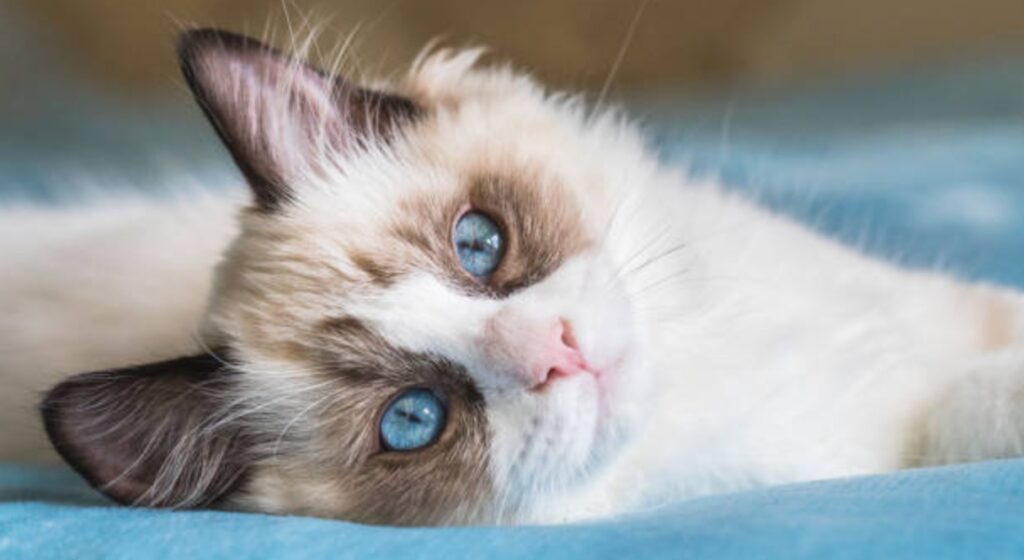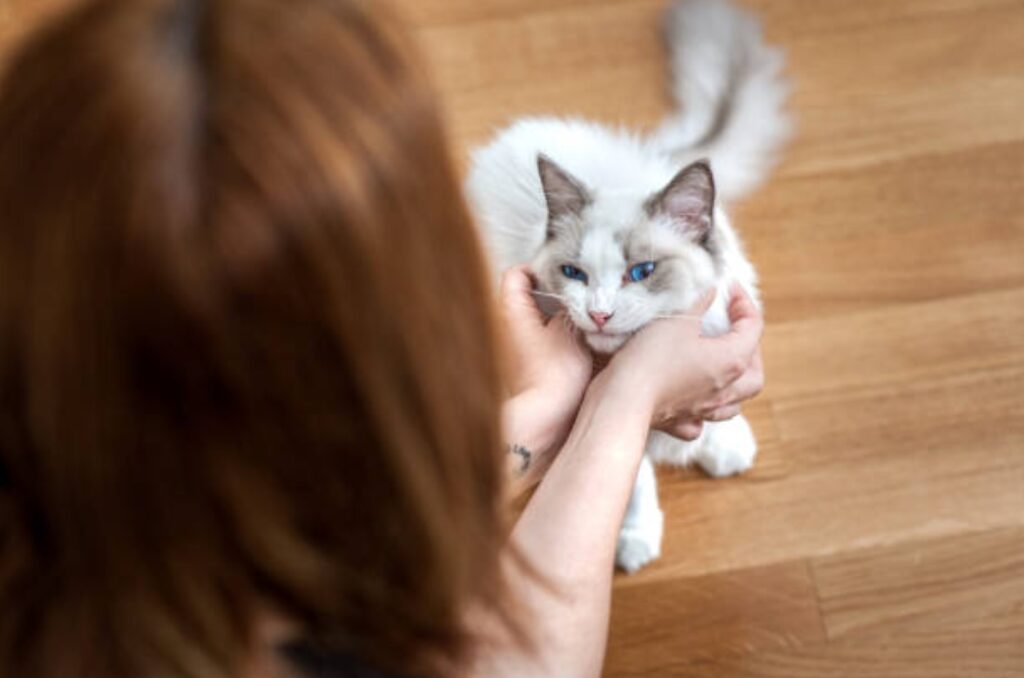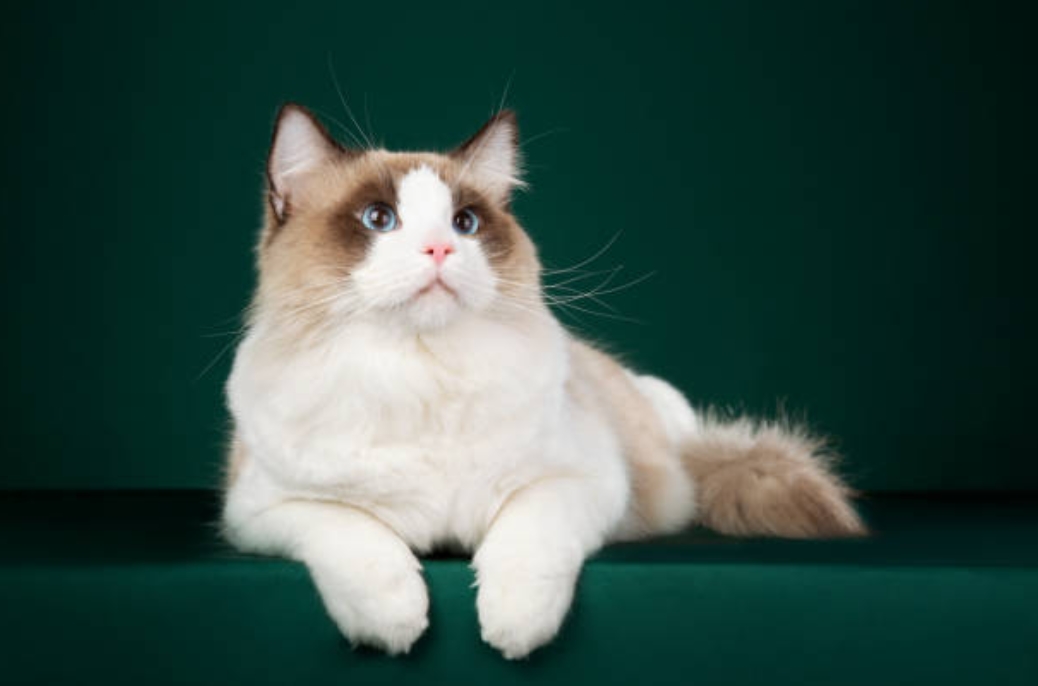Ragdoll cats are known for their stunning appearance and gentle nature. They are large, semi-longhaired cats with captivating blue eyes. Cat Rag dolls are often described as “floppy” because they tend to go limp when picked up, making them wonderful companions for cuddling. Their friendly and docile temperament makes them well-suited for families and individuals seeking a calm and affectionate feline companion.
Why Proper Care is Crucial for Ragdolls
Proper care is essential for the well-being of Ragdoll cats. Just like any other pet, they rely on their owners to provide them with the necessary care and attention. By providing proper care, you can ensure your Ragdoll remains healthy, happy, and comfortable throughout their life. Neglecting their needs can lead to health issues, behavioral problems, and a diminished quality of life. Let’s explore some essential tips for caring for your beloved Ragdoll cat.
10 Effective Strategies to Solve the Cat Pooping Outside Litter Box Dilemma
Establish a Safe and Comfortable Environment
Creating a safe and comfortable environment is crucial for your Ragdoll’s well-being. Ensure your home is free from hazards such as toxic plants, chemicals, or small objects they could swallow. Please provide them with cozy bedding, scratching posts, and toys to keep them entertained. Ragdolls are indoor cats, so ensure your home is a stimulating and secure space where they can roam and play without any dangers.
For example, when I first brought my Ragdoll cat home, I made sure to remove all the plants that could be harmful to her. I also placed soft blankets in her favorite spots, so she has a cozy place to nap. Additionally, I invested in a sturdy scratching post to prevent her from damaging my furniture.
A Nutritious Diet for Optimal Health
Feeding your Ragdoll a balanced and nutritious diet is essential for their overall health and longevity. Consult with your veterinarian to determine the appropriate type and amount of food for your cat. Ragdolls are prone to obesity, so it’s important to provide them with portion-controlled meals to maintain a healthy weight. Choose high-quality cat food that is specifically formulated for their nutritional needs.
For instance, I feed my Ragdoll, a combination of wet and dry food recommended by my vet. I make sure to measure his portions to avoid overfeeding him. It’s also important to provide fresh water at all times to keep your Ragdoll hydrated.
10 Safe and Healthy Human Foods Cats Can Eat: A Comprehensive Guide
Regular Grooming for a Beautiful Coat

Ragdolls have a long and silky coat that requires regular grooming to keep it looking its best. Brushing your Ragdoll’s fur helps prevent matting, removes loose hair, and reduces the amount of hair they ingest while grooming themselves. Aim to brush your cat at least a few times a week, or even daily if their fur is prone to tangling. This not only keeps their coat in top condition but also strengthens the bond between you and your cat.
I remember when I first adopted my Ragdoll, Her coat would often become tangled, causing her discomfort. However, with regular brushing using a soft bristle brush, her fur is now smooth and lustrous. Plus, she loves the grooming sessions and purrs contently throughout.
Maintain a Clean Litter Box
Providing a clean and accessible litter box is vital for your Ragdoll’s hygiene and well-being. Cats are naturally clean animals, and an unclean litter box can lead to stress and even health issues. Scoop the litter box daily to remove waste, and completely change the litter regularly. Place the litter box in a quiet and easily accessible location to ensure your Ragdoll feels comfortable using it.
When I got my Ragdoll, I made sure to set up a litter box in a private corner of the house. I clean it twice a day to ensure it remains fresh and inviting for him. Max quickly adapted to using the litter box and has had no accidents since.
The Top 5 Benefits of Cat Neutering: A Healthier, Happier Feline
Regular Veterinary Check-ups
Regular veterinary check-ups are crucial to monitor your Ragdoll’s health and catch any potential issues early on. Schedule annual visits to the veterinarian for a thorough examination, vaccinations, and preventive care. Ragdolls are prone to certain genetic health conditions, such as hypertrophic cardiomyopathy (HCM), so it’s important to monitor their heart health through regular check-ups and appropriate testing.
For example, during a routine check-up, my veterinarian detected a heart murmur in my Ragdoll, Early detection allowed us to take necessary precautions and provide him with the appropriate treatment to manage his condition effectively.
Play and Exercise for Mental and Physical Stimulation

Engaging your Ragdoll in regular play and exercise sessions are essential to keep them mentally stimulated and physically active. Interactive toys, such as feather wands or puzzle toys, can provide mental enrichment and mimic natural hunting behaviors. Set aside dedicated playtime each day to bond with your Ragdoll and help them release excess energy.
My Ragdoll, Luna, absolutely loves chasing a feather wand toy. We play together for at least 15 minutes every day, and it keeps her entertained and active. Not only does it provide her with physical exercise, but it also strengthens the bond between us.
Provide Scratching Posts for Healthy Claws
Ragdolls, like many other cats, have an instinct to scratch. To prevent them from damaging your furniture, provide them with appropriate scratching posts or boards. Place these posts in various locations around your home to offer different textures and angles. Regularly trim your Ragdoll’s nails to prevent them from becoming too long and causing discomfort.
When I first got my Ragdoll, he had a habit of scratching my couch. To redirect his behavior, I bought a tall scratching post covered in sisal rope. Charlie now happily uses the position to stretch and scratch, sparing my furniture from any further damage.
Dental Care for Oral Health
Oral hygiene is often overlooked but crucial for your Ragdoll’s overall health. Establish a dental care routine by brushing your cat’s teeth regularly with a cat-specific toothbrush and toothpaste. This helps prevent plaque buildup, gum disease, and other dental issues. Additionally, provide dental treats or toys designed to promote good oral health.
At first, my Ragdoll, Simba, was resistant to having his teeth brushed. However, with patience and persistence, I gradually introduced him to the process. Now, he sits calmly while I brush his teeth, and his dental health has greatly improved as a result.
Show Love and Affection
Last but not least, shower your Ragdoll with love and affection. Ragdolls thrive on human companionship and enjoy being part of the family. Spend quality time with your cat, petting and cuddling them to strengthen the bond between you. Offering gentle words, praise, and treats helps reinforce positive behavior and lets your Ragdoll know they are loved and cherished.
My Ragdoll loves nothing more than curling up on my lap while I read or watch TV. The connection we share is truly special, and I make sure to show him love and affection every day. It’s a joy to see how content and happy he is in my company.
Frequently Asked Questions
Q1: Are Ragdoll cats suitable for families with children?
A: Yes, Ragdoll cats are generally great companions for families with children. They have a calm and gentle nature, making them tolerant of kids’ playful antics. However, it’s important to teach children to handle the cat gently and concerning avoid any accidental injuries. Supervision during interactions is advised, especially with younger children.
Q2: How often should I groom my Ragdoll cat?
A: Regular grooming is recommended for Ragdoll cats to maintain their long, silky coats. Brushing their fur a few times a week helps prevent matting and reduces shedding. Additionally, occasional bathing and nail trimming are necessary for proper hygiene. Start grooming sessions early to get your Ragdoll accustomed to the process and make it a positive experience.
Q3: Are Ragdoll cats prone to any specific health issues?
A: While Ragdoll cats are generally healthy, they may be susceptible to certain health conditions. Hypertrophic cardiomyopathy (HCM), a heart disease, and polycystic kidney disease (PKD) are known to occur in some Ragdolls. Regular veterinary check-ups are important to monitor their overall health and detect any potential issues early on.
Q4: Can Ragdoll cats be trained to walk on a leash?
A: Yes, Ragdoll cats can be trained to walk on a leash, although individual personalities and temperaments may vary. Start by introducing a harness and leash gradually, allowing your Ragdoll to get comfortable with the equipment indoors. Once they are used to it, you can begin leash training in a safe and controlled outdoor environment. Positive reinforcement and patience are key during the training process.
Q5: Do Ragdoll cats require a specific diet? A: Ragdoll cats should be fed a well-balanced diet that meets their nutritional needs. Consult with your veterinarian to determine the appropriate type of food (wet or dry) and portion sizes based on factors like age, weight, and activity level. High-quality cat food with good protein and essential nutrient balance is recommended for their overall health and well-being.
Please note that these answers are provided as general guidelines, and it’s always advisable to consult with a veterinarian for personalized advice regarding your Ragdoll cat’s specific needs and requirements. Cat rag doll, most relevant content around the net wikipedia.org, dailypaws.com, thesprucepets.com
Conclusion of Essential Tips for Caring for Your Cat Rag Doll
In conclusion, caring for your Ragdoll cat involves creating a safe environment, providing a nutritious diet, regular grooming, maintaining a clean litter box, scheduling regular veterinary check-ups, engaging in play and exercise, offering scratching posts, prioritizing dental care, showing love and affection.
Train Your Cat in 5 Simple Steps: A Beginner’s Guide
We hope you found these essential tips for caring for your Ragdoll cat helpful and informative! We would love to hear from you. If you have any additional tips, personal experiences, or questions about Ragdoll cat care, please comment below. Your insights and input are valuable, and we encourage a community of cat lovers to share their knowledge and experiences. Let’s come together to ensure the well-being and happiness of our beloved Ragdolls!
